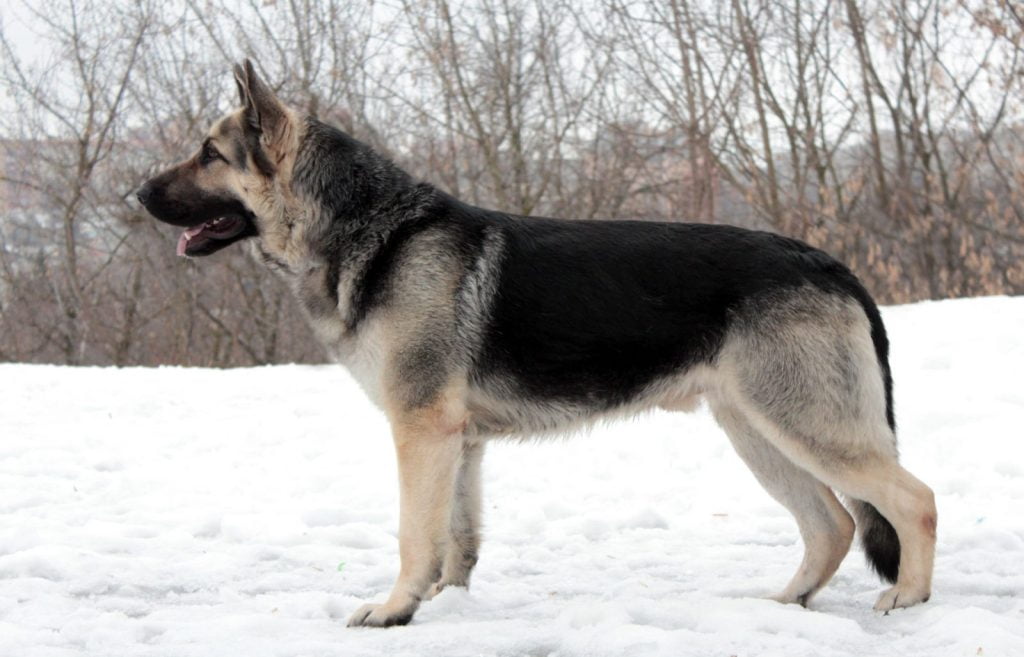Are you considering getting an East European Shepherd breed dog as a pet? If so, you are in for a loyal, protective, and intelligent companion. This breed originated in Russia and was bred for guarding and protecting livestock. They are known for their bravery and strong work ethic. While they may not be the best fit for every owner, those who are willing to put in the time and effort to train and socialize them will be rewarded with a devoted and affectionate furry friend. In this article, we will explore the characteristics, temperament, and care requirements of the East European Shepherd breed to help you determine if they are the right fit for you.
Breed Category: Working
Country of Origin: Russia
Average Size:66-76 cm (male), 62-72 cm (female)
Average Weight:30-50 kg (male), 25-45 kg (female)
Average Life Span: 10-12 years
Grooming Requirements: Moderate
Exercise Requirements:High
History and Origin
The East European Shepherd, also known as the Vostochnoevropeiskaya Ovcharka, is a breed of dog that originated in the former Soviet Union. This breed was developed during the 20th century by the Soviet military to serve as a working dog in various roles, including as a guard dog, search and rescue dog, and even as a sled dog.
The East European Shepherd is a large and powerful breed, with males typically weighing between 110-150 pounds and females weighing between 80-120 pounds. They have a thick, dense coat that is usually black or black and tan, and their ears are typically cropped. This breed is known for its loyalty, intelligence, and protective nature, making it an excellent choice for families looking for a guard dog or a companion animal.
The East European Shepherd was developed by crossing various breeds of working dogs, including the German Shepherd, Caucasian Shepherd, and Central Asian Shepherd. The goal was to create a breed that was well-suited to the harsh climate and rugged terrain of the Soviet Union, and that could perform a variety of tasks in a military or civilian setting.
The East European Shepherd was first recognized as a breed in 1964 by the Soviet Union’s Ministry of Agriculture, and it quickly gained popularity throughout the country. However, it wasn’t until the fall of the Soviet Union in 1991 that the breed began to be exported to other countries. Today, the East European Shepherd is recognized by various kennel clubs around the world, including the United Kennel Club and the American Kennel Club.
Despite its popularity, the East European Shepherd is still a relatively rare breed outside of its country of origin. This is due in part to the fact that it is not as well-known as other breeds, such as the German Shepherd or the Rottweiler. However, those who do own an East European Shepherd often speak highly of their intelligence, loyalty, and protective nature.
In conclusion, the East European Shepherd is a breed of dog that was developed in the former Soviet Union for use as a working dog in various roles. It is a large and powerful breed that is known for its loyalty, intelligence, and protective nature. While it is still relatively rare outside of its country of origin, those who do own an East European Shepherd often speak highly of its many positive qualities.
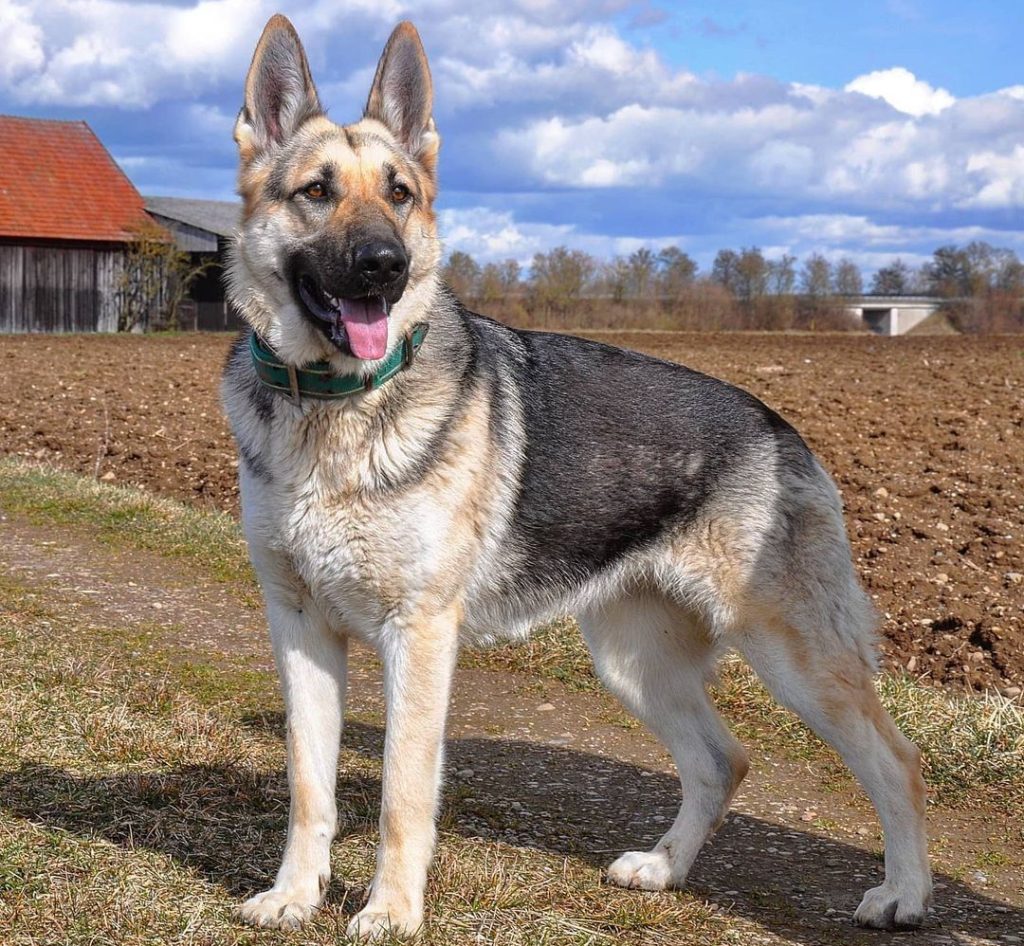
Size and Breed Category
The East European Shepherd is a large breed of dog that originated in the Soviet Union. They are known for their impressive size and muscular build, with males typically weighing between 110-150 pounds and standing at 26-30 inches tall at the shoulder. Females are slightly smaller, weighing between 80-120 pounds and standing at 24-28 inches tall. Their coat is thick and dense, with a double layer that provides excellent protection from the cold. The outer layer is coarse and straight, while the undercoat is soft and fluffy. The most common coat colors are black and tan, but they can also come in solid black, gray, or sable.
The East European Shepherd is classified as a working breed, and they are known for their intelligence, loyalty, and protective nature. They were originally bred to guard livestock and protect their owners from predators, and they are still used for these purposes today. They are highly trainable and excel in obedience and protection work. They are also great family pets, as they are affectionate and loyal to their owners. However, due to their size and protective nature, they require a lot of socialization and training from a young age to ensure they are well-behaved around strangers and other animals.
Fur Length and Colour
The fur of the East European Shepherd is typically long and dense, providing excellent protection against harsh weather conditions. The undercoat is thick and soft, while the outer coat is coarse and straight. The fur is usually longer around the neck, chest, and tail, giving the dog a majestic appearance. The fur can come in a variety of colours, including black, gray, sable, and white. Some dogs may have a combination of these colours, with black and sable being the most common. The fur is usually darker on the back and lighter on the belly and legs. The East European Shepherd’s fur requires regular grooming to prevent matting and tangling.
The East European Shepherd’s fur is an important characteristic of the breed, as it provides protection and insulation in cold climates. The fur is also water-resistant, which helps to keep the dog dry in wet conditions. The fur can vary in length depending on the individual dog, with some dogs having longer fur than others. The colour of the fur can also vary, with some dogs having a more uniform colour and others having a more mottled appearance. The fur is an important aspect of the East European Shepherd’s appearance, and it is often a source of pride for owners who take great care in maintaining their dog’s coat.
Termperament and Trainability
East European Shepherds are known for their high energy levels and strong work ethic. They are a breed that requires a lot of physical and mental stimulation to keep them happy and healthy. They are also very loyal and protective of their families, making them excellent guard dogs. However, they can be wary of strangers and require early socialization to prevent any aggressive behavior. In terms of trainability, East European Shepherds are highly intelligent and eager to please their owners. They respond well to positive reinforcement training methods and excel in tasks such as obedience, agility, and tracking. With proper training and socialization, they can make excellent working dogs or family pets.
Despite their high energy levels, East European Shepherds are also known for their calm and steady temperament. They are not easily spooked or distracted, making them ideal for tasks that require focus and concentration. They are also very adaptable and can thrive in a variety of environments, from rural farms to urban apartments. However, they do require regular exercise and mental stimulation to prevent boredom and destructive behavior. Overall, East European Shepherds are a versatile breed that can excel in a variety of roles, from working dogs to loyal companions. With proper training and socialization, they can make a wonderful addition to any family.
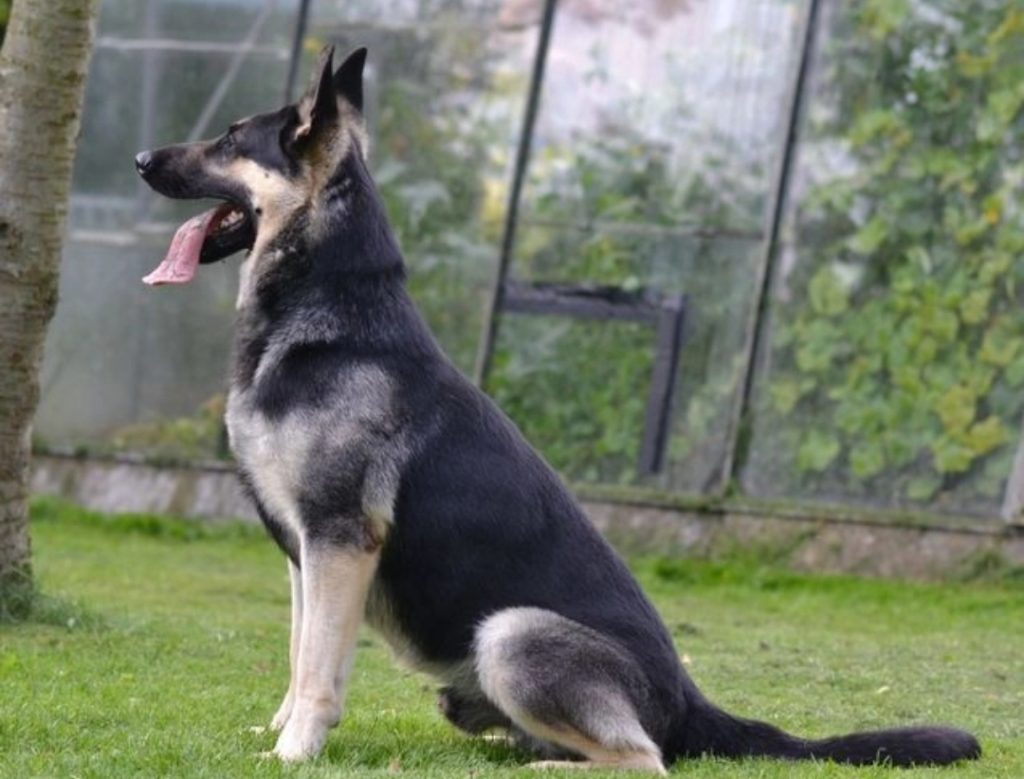
Known Health Conditions
East European Shepherds are prone to certain health conditions that owners should be aware of. One of the most common issues is hip dysplasia, which is a genetic condition that affects the hip joint. This can cause pain, lameness, and arthritis, and can be exacerbated by factors such as obesity and over-exercise. Another condition that East European Shepherds are susceptible to is bloat, which is a life-threatening condition where the stomach fills with gas and twists on itself. This can cause a range of symptoms, including restlessness, vomiting, and a distended abdomen. Immediate veterinary attention is required if bloat is suspected.
In addition to hip dysplasia and bloat, East European Shepherds may also be prone to other health issues. For example, they may be at risk of developing allergies, which can cause skin irritation, itching, and hair loss. They may also be prone to eye problems such as cataracts and progressive retinal atrophy, which can lead to blindness. Finally, East European Shepherds may be more likely to develop certain types of cancer, such as osteosarcoma and hemangiosarcoma. Regular veterinary check-ups and preventative care can help to identify and manage these conditions.
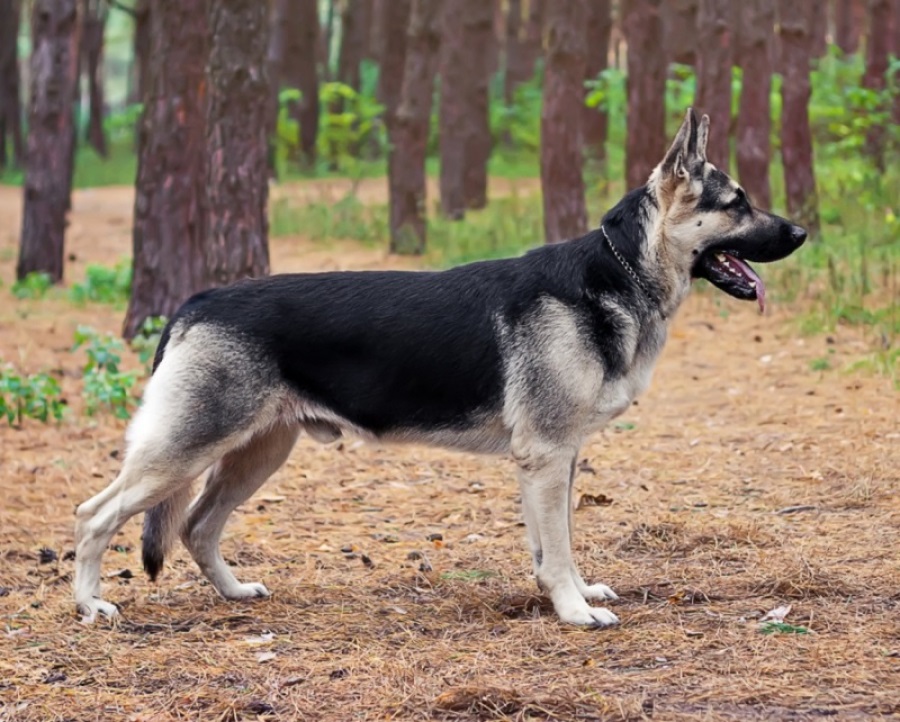
Openness to Strangers
The East European Shepherd is a canine breed that is known for its friendly and welcoming nature towards strangers. This breed is highly sociable and enjoys the company of people, making it an ideal pet for families with children. The East European Shepherd is also known for its loyalty and protective instincts, which make it an excellent guard dog. Despite its protective nature, this breed is not aggressive towards strangers and is always willing to make new friends. Its friendly and outgoing personality makes it a popular choice for pet owners who are looking for a loyal and affectionate companion.
In addition to its friendly nature, the East European Shepherd is also highly intelligent and trainable. This breed is known for its ability to learn quickly and respond well to positive reinforcement training methods. Its intelligence and trainability make it an excellent choice for working roles such as search and rescue, police work, and therapy dog work. The East European Shepherd is also highly adaptable and can thrive in a variety of environments, from urban apartments to rural farms. Its versatility and friendly nature make it a beloved breed among dog owners around the world.
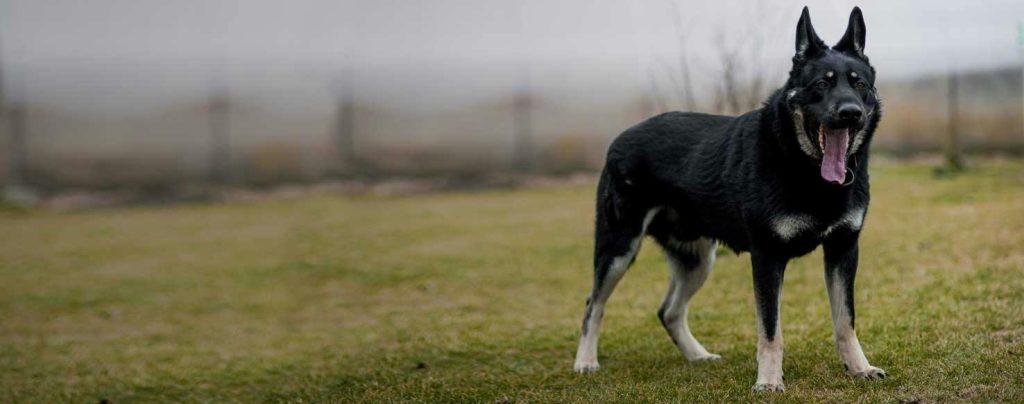
Playfulness Level
The East European Shepherd is a highly energetic and playful dog breed that requires plenty of exercise and mental stimulation to stay happy and healthy. These dogs are known for their love of play and their ability to entertain themselves for hours on end. Whether it’s chasing after a ball, playing tug-of-war, or simply running around in circles, the East European Shepherd is always up for a good time.
Despite their playful nature, however, these dogs are also highly intelligent and require plenty of mental stimulation to stay engaged. They thrive on learning new tricks and commands, and are always eager to please their owners. With their high energy levels and playful personalities, the East European Shepherd is the perfect companion for anyone who loves to stay active and engaged with their furry friend.
Suitability as a Pet for Children
East European Shepherds, also known as Vostochno Evropeiskaya Ovcharka, have a strong and protective nature. They are loyal and affectionate towards their family, making them a great pet for children who are looking for a companion. These dogs are highly intelligent and can be trained to perform various tasks, including guarding and herding. They have a muscular build and require regular exercise to maintain their physical health. East European Shepherds have a thick coat that requires regular grooming to prevent matting and tangling. Overall, they are a great choice for families who are looking for a loyal and protective pet.
Exercise Needs
East European Shepherds are highly active dogs that require a significant amount of exercise to maintain their physical and mental health. These dogs are known for their high energy levels and need for regular physical activity. They are best suited for owners who can provide them with ample opportunities to run, play, and engage in other forms of physical activity. A daily walk or run is not enough to meet the exercise needs of an East European Shepherd. These dogs require more intense forms of exercise, such as agility training, hiking, or playing fetch. Owners should also provide their East European Shepherds with plenty of mental stimulation, such as puzzle toys or training sessions, to keep them mentally engaged and prevent boredom.
East European Shepherds are not suitable for apartment living or for owners who cannot commit to providing them with regular exercise. These dogs thrive in homes with large yards or access to open spaces where they can run and play freely. They are also well-suited for owners who enjoy outdoor activities and can incorporate their dogs into their daily routines. East European Shepherds are highly intelligent and trainable, making them excellent candidates for obedience training and other forms of structured exercise. However, owners should be prepared to invest time and effort into training their dogs, as these dogs can be strong-willed and require consistent, patient training methods. Overall, East European Shepherds are active, intelligent dogs that require a significant amount of exercise and mental stimulation to thrive.

Suitability for a Multi-Pet Family
East European Shepherds have a reputation for being protective of their family and territory. They are known to be wary of strangers and can be aggressive towards other dogs if they perceive them as a threat. However, with proper socialization and training, they can coexist peacefully with other pets in the household. It is important to introduce them to other animals at a young age and supervise their interactions to ensure everyone’s safety.
Housing Requirements
East European Shepherds are a highly active breed that require a lot of space to move around in. They need a large, secure garden or yard to play and exercise in, as well as a comfortable indoor space to rest and sleep in. The ideal living space for an East European Shepherd would be a house with a garden or yard that is at least 500 square meters in size. This will give them plenty of room to run around and play, which is important for their physical and mental health. Additionally, they need a comfortable indoor space that is well-ventilated and temperature-controlled, as they are sensitive to extreme temperatures. A spacious living room or bedroom with a comfortable bed and plenty of toys and chewables would be ideal for an East European Shepherd.
East European Shepherds are a breed that requires a lot of attention and socialization. They thrive on human interaction and need to be around their owners as much as possible. Therefore, it is important that they have a living space that allows them to be close to their owners. A house with an open-plan living area would be ideal, as this will allow them to be close to their owners while still having their own space to play and rest. Additionally, they need a lot of mental stimulation, so it is important that their living space is filled with toys, puzzles, and other interactive games. This will help keep them mentally stimulated and prevent them from becoming bored or destructive. Overall, an East European Shepherd needs a living space that is spacious, comfortable, and filled with plenty of toys and activities to keep them happy and healthy.
Summary
The East European Shepherd has a reputation for being a loyal and protective companion, making them a suitable pet for those seeking a guard dog. However, their strong-willed nature and need for extensive training and socialization may make them unsuitable for inexperienced owners or those with limited time to devote to their pet’s needs. Additionally, their large size and high energy levels may not be suitable for those living in smaller homes or without access to outdoor space.
East European Shepherd Dog FAQS
Yes, East European Shepherds are highly intelligent and trainable, but they require a firm and consistent hand in training.
Yes, East European Shepherds are known to be great with children and make excellent family pets.
East European Shepherds are generally healthy dogs, but they may be prone to hip dysplasia and bloat.
No, East European Shepherds are large dogs and require a lot of space to move around. They are better suited for homes with a large yard or open space.
Yes, East European Shepherds are high-energy dogs and require at least 1-2 hours of exercise per day.
Yes, East European Shepherds have a thick double coat and shed heavily twice a year.
East European Shepherds require regular grooming, including brushing their coat at least once a week and bathing them every 2-3 months.
An East European Shepherd can grow up to 70-80 cm in height.
The average weight of an East European Shepherd is between 30-50 kg.
The average lifespan of an East European Shepherd is between 10-12 years.
